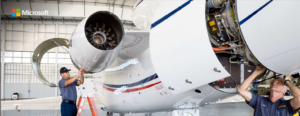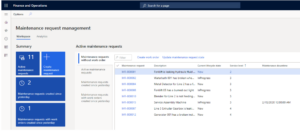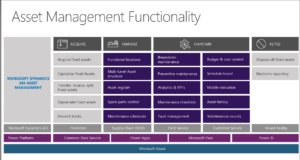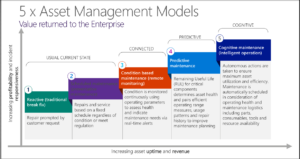Assets include for example buildings and machinery, IT equipment. company mobile phones and credit cards, cars, shipping vehicles and containers and son on.. TA malfunction or failure of your assets for example a production machine or a delivery vehicle can negatively impact your supply chain. Aa global enterprise will have thousands of assets.
Dynamics 365’s, Asset Management module allows companies to manage their maintenance operations with real-time access to their maintenance costs without having to separately collect data, to analyze it. Use Asset Management to both plan and execute maintenance and and servicing of equipment in your company, . It integrates seamlessly with several Dynamics 365 modules and other apps.

Functional Locations and Assets
Use Functional locations to manage assets on locations and to track asset costs at functional locations. Functional locations are structured hierarchically, and locations can have sub-locations.. Assets can be installed on functional locations and, be reinstalled on other functional locations.
Asset costs always follow the location of the asset. When you install an asset on a new functional location, the asset automatically uses the financial dimensions that are related to the new functional location. Therefore, asset costs are always related to the functional location that the asset is currently installed. This automatic handling of financial dimensions helps guarantee accurate cost tracking when your company does project controlling and reporting on functional locations.
Also build a hierarchy of functional locations for your company internal equipment maintenance, or for servicing customer equipment.
Assets and Work Orders
. An asset is a machine assembly or machine part that requires on-going maintenance and service.
Assets can be created in a hierarchical structure, and they can be related to functional locations.
Maintenance jobs can be planned at all levels in the asset structure.

For each asset set up related data, such as asset specification, and required maintenance plans and the affiliation of assets to job types.
Every work order has a work order type, such as preventive or corrective maintenance, or inspection.
The work order contains one or more work order jobs. Every work order job defines a job that must be performed on an asset and a related job type.
Examples of related job types include 10,000 km, 50,000 km, 1-year overhaul, and safety inspection.
One work order can be related to multiple assets.
A work order can be related to another work order, and job types can contain succeeding jobs that create a work order. In general, there are no dependencies between work orders. Therefore, they can change their work order lifecycle state and can be scheduled independently of each other.

Integration with ERP
The integration of Asset Management with Dynamics 365 applications supports drill down into your maintenance data to understand exactly what is driving your costs, and to determine how optimise your assets.
- Project management and accounting – allows a holistic view into the costs associated with work on specific objects, by area, by a worker, etc.
- Human resources – provides the capability to assign workers to specific work requests and allows for a clearer vision of the true cost of maintaining your assets.
- Fixed assets – allows greater visibility into the cost of maintaining an asset.
- Inventory management – maintains spare parts inventory.
- Master planning – provides planned purchase orders based on criteria set up in the system, ensuring that the maintenance department never runs out of parts.
- Procurement and sourcing – allows maintenance departments to have clear visibility into their orders and expenditures.
- Accounts payable – allows vendors to be paid on time and allows the accounting department greater visibility into maintenance expenses.
- General ledger – grants visibility into the maintenance process from an accounting perspective.
